

Gjertrud Steinsvåg
In this interview with artist Franz Schmidt by Gjertrud Steinsvåg we are introduced to the exhibition Weaving Fabrics for Suits at Oslo Art Society and Schmidt’s experience working with decommissioned industrial woollen mills. Schmidt’s artistic practice involves weaving fabrics, tailoring garments, and collecting historical objects – an exercise which closely examines how material things become imbued with emotional significance.
The exhibition Weaving Fabrics for Suits was on show at Oslo Art Society earlier this year (13 March – 19 April 2015). Featuring installations consisting of archival material, textiles, suits, photographs, work notes, and texts, it represented the final stage in Franz Petter Schmidt’s period as a research fellow at the Oslo National Academy of the Arts. The project marks the end of several years of research, hard physical work, revision, and decision making. The starting point for the research project was Schmidt’s earlier work experience at Sjølingstad Woollen Mill, near Mandal, and Gudbrandsdalens Woollen Mill in Lillehammer, Norway. Gjertrud Steinsvåg talked with Schmidt about the ‘consummate object‘ — the ultimate blue suit — as a carrier of values, longing, and dignity.
The three rooms at Oslo Art Society (Oslo Kunstforening) focus on three key aspects in the project: the factory, the men’s suit, and the research process. In the first room, one sees Franz Schmidt’s selection of objects from Gudbrandsdalens Woollen Mill and Sjølingstad Woollen Mill. The history of these factories is told through colour samples, workbenches, tools, professional manuals, and photo-documentation. The objects appear as museum objects, but also as things that could just as well be carted off to the garbage dump. The first room, which represents the factory, immediately triggers questions about the way we value material and immaterial heritage. In the second room, we see two men’s suits and a photograph of the river that has been crucial for Sjølingstad Woollen Mill’s operations — even today it continues as a working industrial museum. The green suit is made by Siv Støldal, a member of the design collective HAiK, while the blue suit is bespoke-tailored by Liv Guri Østrem. It’s made for Franz’s own body. The last room, which represents Franz’s workspace, incites us to engage with processes and production. Here there are spools of yarn and bolts of textiles from Gudbrandsdalens Woollen Mill and from Sjølingstad: colour samples, notebooks, recipes, and old textile history books.
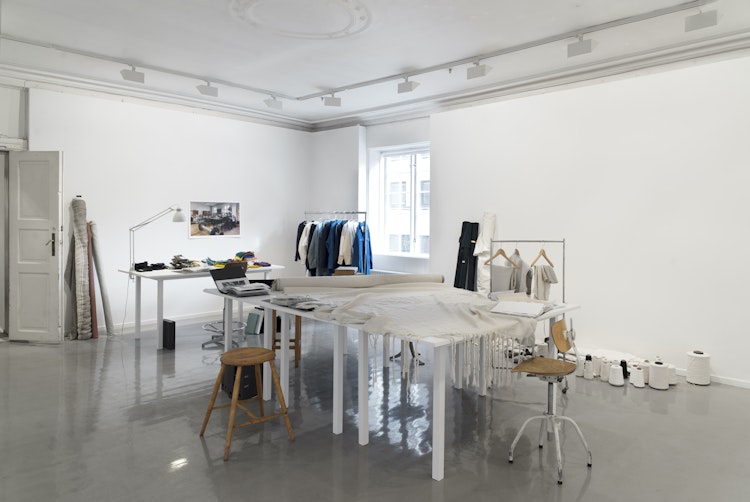
This dramaturgy creates a complex exhibition; while thoroughly orchestrated, it is imbued with a certain je ne sais quoi. Still, it attracts and fascinates me, and it makes me curious to dig into the layers of symbolic value in each element. It strikes me, that it is the person, Franz, who fascinates me. That while Weaving Fabrics for Suits is a local, almost romantic story about materials and collective heritage, it is also a story about Franz himself. Perhaps it has to do with thoroughness; that the exhibition seems thoroughly researched and appealing, because so also is Franz. People at Sjølingstad Woollen Mill would attest to his appeal. Or maybe I allow myself to be intrigued by his combined qualities of distance and openness. How Franz, and the exhibition, radiate both welcoming warmth and a sense of reserve. In this relation of contrasts, I seek an identity. And maybe Franz does as well. Did you know that Franz was christened Lars Petter? But that when he was 11 years old, he asked his parents if he could be called ‘Franz’, like his father? Maybe it’s this eternal search for one or another identity that makes the blue tailored suit appear as the consummate object. Or as Franz himself says, ‘The tailored suit is the ultimate method for communicating with the public.’
We’re finally seeing your research-fellow exhibition. Relieved?
‘Yes, absolutely. First of all because I’m incredibly proud of the project and I feel confident about the result. My aim for Weaving Fabrics for Suits was to be more open with my own personal history, so the linkage between me and the documentation comes more to the fore.’
This is a complex project you are exhibiting at Oslo Art Society. I find myself seeking the core theme, and whenever I think I’ve identified it, something else grabs my attention. Is it about Norwegian textile production under threat of extinction? Is it a socio-political project? Is it about perpetuating traditions and knowledge — is it a protectionist project? Innovative design and the lead-heavy tradition of tailoring clearly come across through the two suits and your collaboration with HAiK and Liv Guri Østrem — but what role do these themes play? What, ultimately, is Weaving Fabrics for Suits about?
‘It’s about all the themes you mention. I’m fundamentally interested in seeking connections and in understanding how we, as people, relate to our material and immaterial surroundings.
My work and research reflect the necessity to look more deeply into the connections: the meaning of objects, how they are symbolic markers, sensory experience, sensual experience. In the project Weaving Fabrics for Suits, the first phase was to take recourse in the knowledge and experience I accrued at Sjølingstad, then to orient myself in the Norwegian textile industry more generally. But then it eventually turned out that Sjølingstad and the work I did there, became the project’s backbone. The core. The other research themes then became more like experiments. Satellites.’
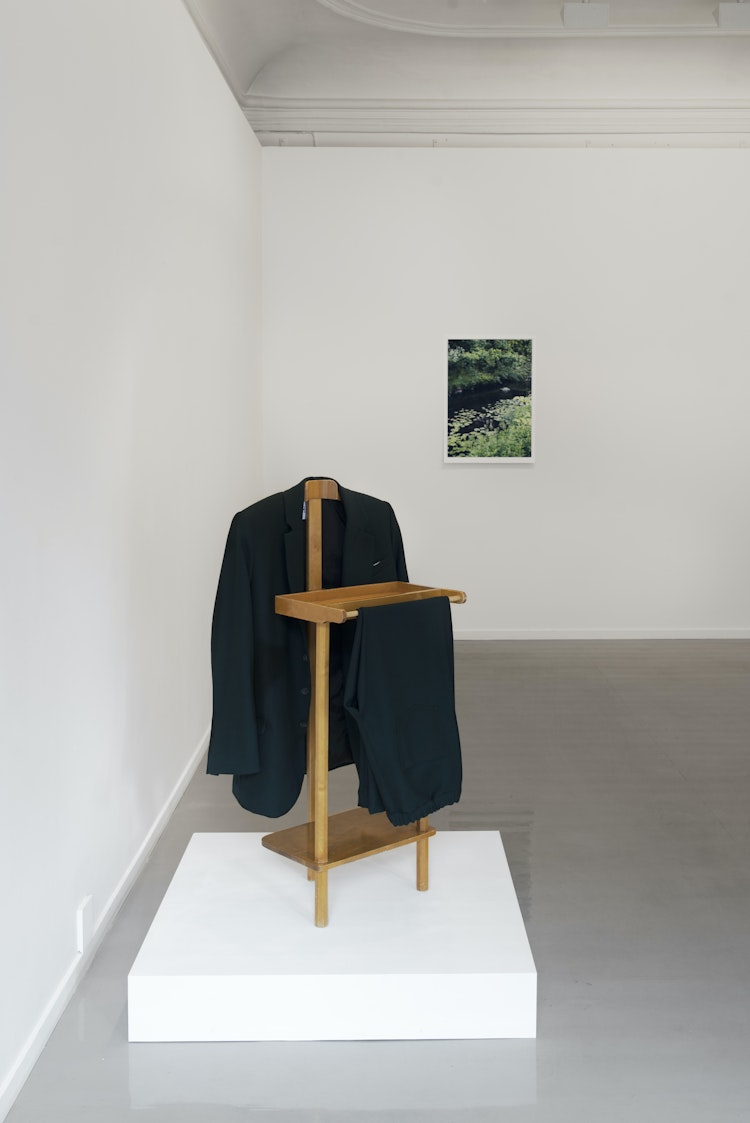
‘I don’t have an instrumental relation to how I should use information. Instead, I leave open the possibility of moving the elements around to see where they fit, in order to tell the story I need to tell. The information establishes a framework for experimenting and working more abstractly while telling a story about these factories and all that they represent. The project’s first phase entails orientation, observation, and registering my attraction and fascination — if there is any. Then I make a number of decisions, to some extent based on instinct, or on intuition, and remain for a long time in an open production phase. This is a time to explore and orient myself in the material, and it involves weaving, dyeing wool, etc., in the workshop. This part of the research is fantastic, demanding, and open. I become absorbed and work around the clock.
But this stage eventually comes to an end and is followed by a process of making my reading of the research material accessible to others. This is when the often painful and demanding editing process begins; many selections and de-selections. I need to remain mentally present throughout this process in order to sustain the material’s vitality, to conjure the history but simultaneously show that it’s me who is behind all the editing. All these choices – to sort the meaning and significance of all the elements, to understand the material, delimit, adapt formats, identify who will be reading the story — all this is terribly painful. It requires courage. And then to pose questions to myself, about what in the world I’m doing, and whether it will be an interesting story for anyone other than myself.’
And then all these phases, systems and objects represent a kind of Weltanschauung?1
‘Yes, you could say that. The various aspects need to be seen in relation to each other: the historical and documentary material from the factories, the construction of the textiles, the hard physical work, the textiles that become a garment through collaboration with others. All these aspects are important parts of my personal seeking.’
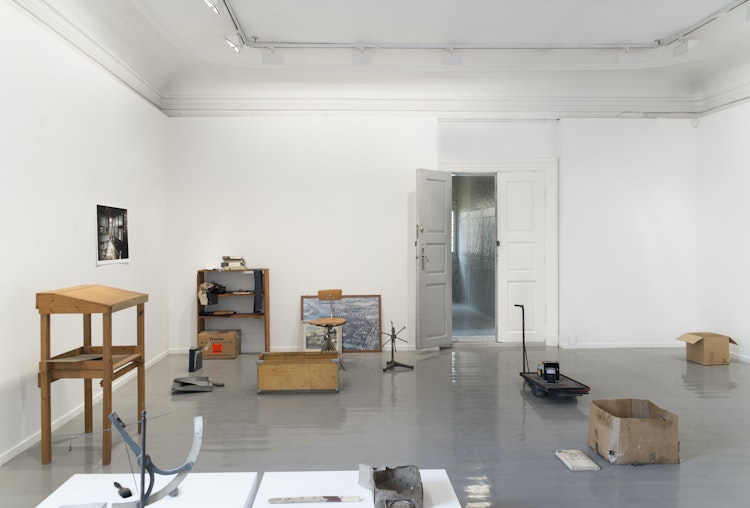
What is it you seek?
‘Brilliance.’
Why is brilliance important?
‘I’m passionate about it. To achieve perfection. It’s ultimately about finding one’s self-respect and dignity.’
But there must be something more here. Because I experience that brilliance, as a quality, can often seem distanced and almost cold. With your close links to the factories and the documentation, I’ve heard several people talk about your project as a purely political stand point about the textile and fashion industries. But for me, there’s also a sense of warmth. In Weaving Fabrics for Suits, there’s a systematic and well-cogitated expression of intense love— love for materials, history, not least for the people working at the factories, the suits. What is this emotional declaration?
‘A means for coping with loss.’
Grieving?
‘Yes. The research period has helped me come to the core of something I’ve known was there, but which I hadn’t understood. Working with this historical material represents a way of understanding how material things can have valuable significance and define us as persons. It’s brought back memories and helped me understand my legacy.’
What legacy are you referring to?
‘It’s about several things. Important events have left their mark on me, such as when our house burned down when I was 12 years old. I have such strong memories of the things that were lost, and I remember it of course as a dramatic loss for the whole family. But it’s also a memory of how things of material value were far too significant for my parents. How they had built a façade and identity based on physical manifestations. For my father, having a cabin was also important. He died when I was 23. Shortly thereafter, my mother sold it, without understanding the emotional aspect of what that cabin represented for our family. All this personal history is involved here. To understand how or why such material losses have the power to define the core values I grew up with.’
‘The various aspects need to be seen in relation to each other: the historical and documentary material from the factories, the construction of the textiles, the hard physical work, the textiles that become a garment through collaboration with others. All these aspects are important parts of my personal seeking.’
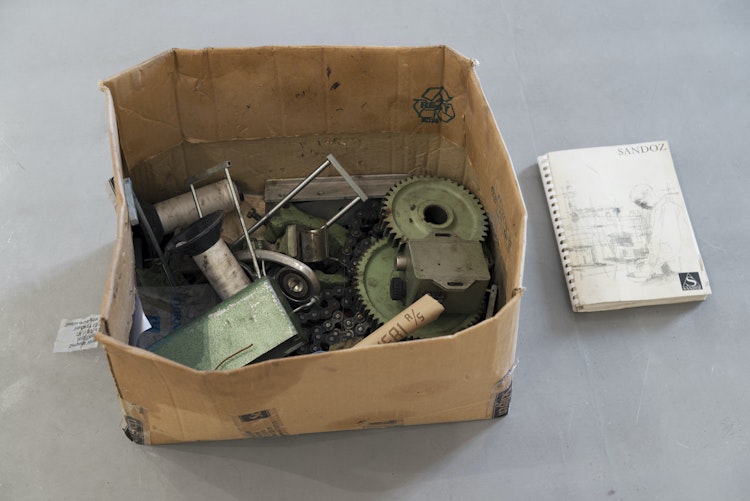
Have you seen Jon Fosse’s play And We’ll Never be Parted?
‘No.’
It’s a fantastic work about loss. The female protagonist is deserted by her husband. She anchors herself in her home, and with Fosse’s characteristically repeating sentences, there’s a strong experience of how she clings to physical things in order to cope with loss; ‘But I have my things!’ Things replace relationships. When you talk about your parents’ relation to things, it seems to be an instance of turning the criticism on its head; of things not being important enough. But when I think about this grieving through Weaving Fabrics for Suits, there seems to be greater ambivalence — because doesn’t the exhibition also express a love for things? A kind of claim about the value-related content in objects? And that the brilliance of making the objects has value?
‘Yes, ambivalence is a fitting description. I’ve searched for my own fundamental values for as long as I can remember. The ideal of being brilliant or to do something brilliant has become part of this endeavour. When I ‘came out’ as gay at 20, the immediate reaction from my parents was rejection, and I’ve had to work extremely hard to be accepted for what I am and to accept myself. The search for dignity has definitely been a theme. I’ve searched for the consummate object that represents this dignity, and have in many ways come to an important terminus in Weaving Fabrics for Suits.’
The blue suit?
‘Yes. Despite uncertainty, I’ve always relied on my own body and on the clothing I wear. Clothes always tell a story about who you are, or who you want to be. But the blue suit, for me, carries an entirely different complexity. It’s a natural consequence of my work with weaving and dyeing at Sjølingstad. The material tells the factory’s complex history — about the things this history can mean or symbolise. It’s sewn for my body and shows my lengths and angles and imbalances, and it envelopes me. The blue suit is a picture of me, a manifestation of who I am, or who I dream of being.’
You seem to have been through catharsis. It’s of course not just a research period you’ve finished, but you also seem to suggest that the process of mourning has been communicated and shelved?
‘The research period has made me more self-assured. It’s been a matter of having both the time and the funds to do a type of intense thinking that enables you to break your own codes. It’s been particularly important to meet critical discussion partners such as my advisors and colleagues, who also have backgrounds within the fields of music, design and visual art. The interdisciplinary aspects have been amazingly fruitful and intense experiences, and they’ve required that I open up. They’ve strengthened my own intuition about what I’m doing and enabled me to understand my position better.’
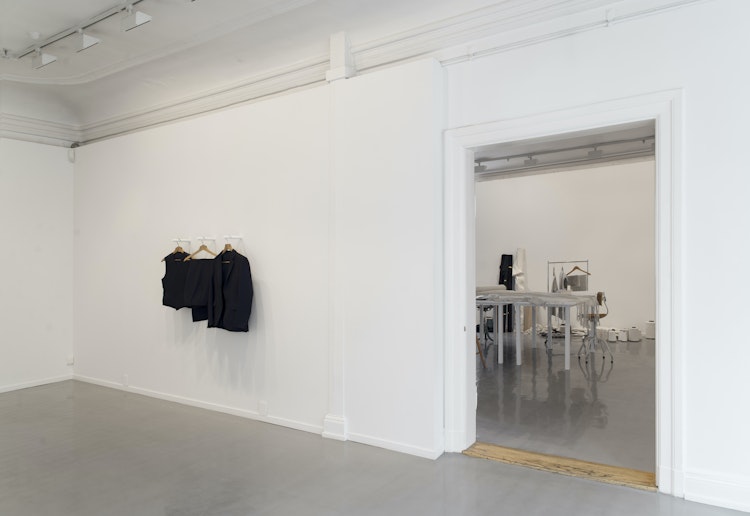
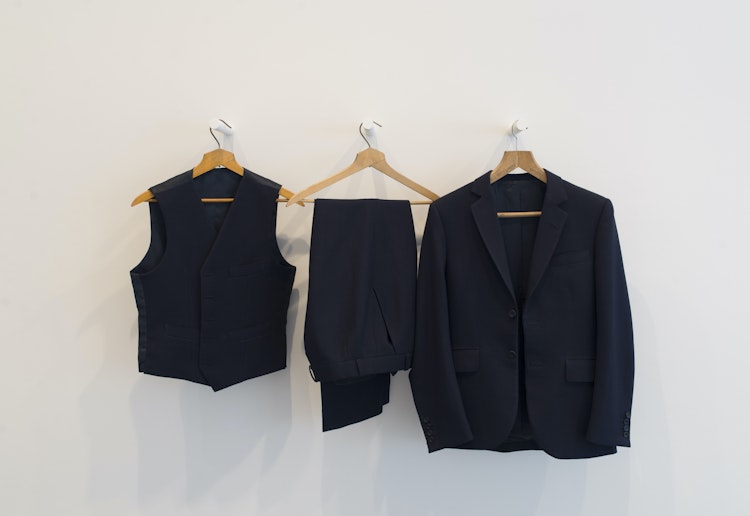
And now?
‘Good question. Give me a little time.’
I will. But I know that you’ve taken over responsibility for the old weaving factory at Prindsen in the Grünerløkka area of Oslo, which has been closed since the 1990s and was listed as a cultural heritage site four years ago. As an external observer, I imagine that this must be like a playpen for you? New ways of telling your stories to the public?
‘A playpen charged with great seriousness and respect, in any case. Prindsen has unbelievable potential to be a place where diverse types of people and forms of collaboration can intersect, but I don’t have an overview yet. At the same time, I’ve become so aware of different aspects of my work through the research project. So it’s irrelevant to repeat the type of schema used at the Sjølingstad and Gudbrandsdalen Woollen Mills. For Prindsen, I need a new angle— an angle I’m sure I’ll find. There’s something about Prindsen that calls to me. It could very well be that I will still be there as a 75-year-old. A fully engaged and well-informed 75-year-old. Perhaps wearing a blue suit.’